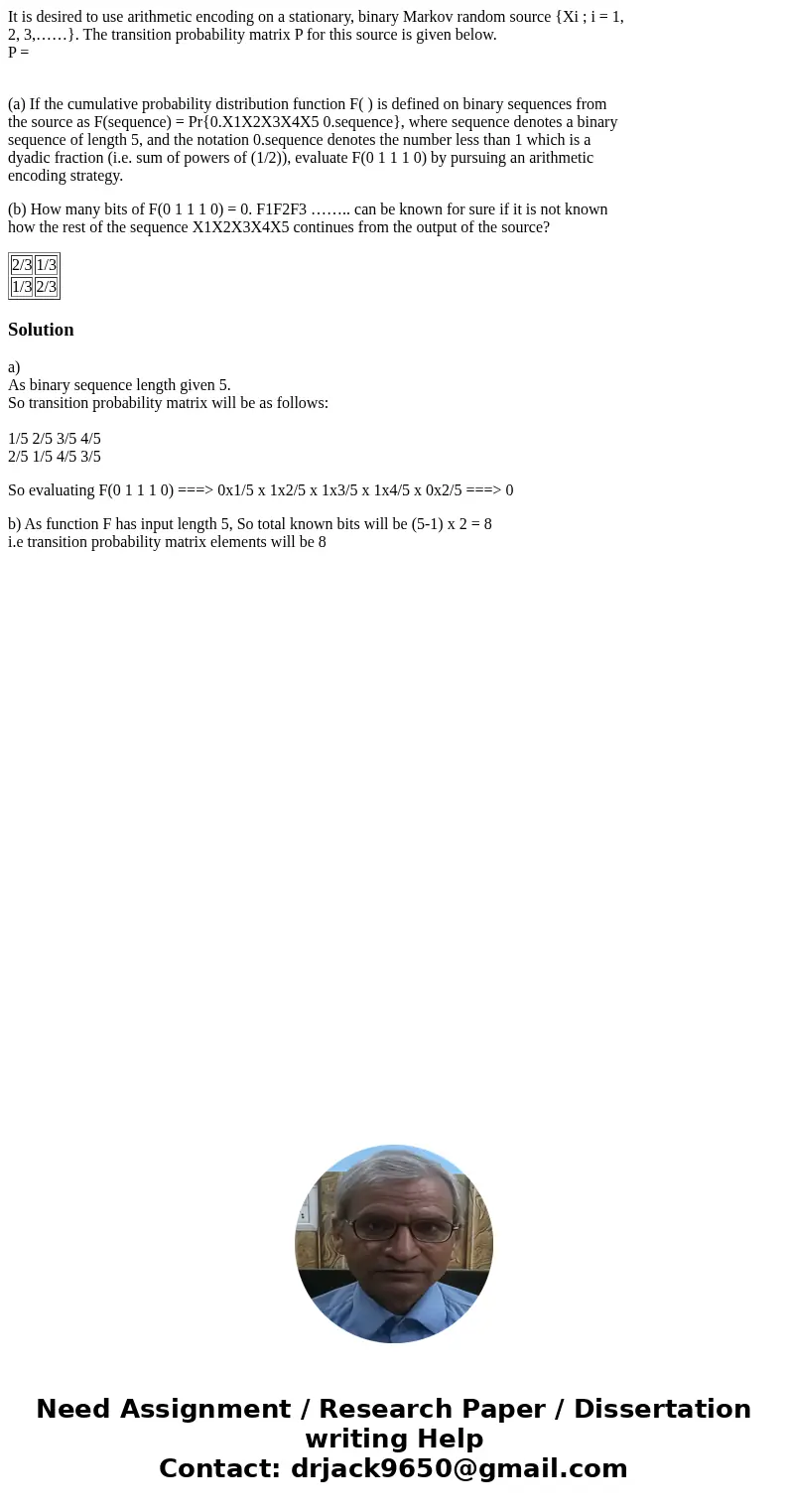It is desired to use arithmetic encoding on a stationary bin
It is desired to use arithmetic encoding on a stationary, binary Markov random source {Xi ; i = 1,
2, 3,……}. The transition probability matrix P for this source is given below.
P =
(a) If the cumulative probability distribution function F( ) is defined on binary sequences from
the source as F(sequence) = Pr{0.X1X2X3X4X5 0.sequence}, where sequence denotes a binary
sequence of length 5, and the notation 0.sequence denotes the number less than 1 which is a
dyadic fraction (i.e. sum of powers of (1/2)), evaluate F(0 1 1 1 0) by pursuing an arithmetic
encoding strategy.
(b) How many bits of F(0 1 1 1 0) = 0. F1F2F3 …….. can be known for sure if it is not known
how the rest of the sequence X1X2X3X4X5 continues from the output of the source?
| 2/3 | 1/3 |
| 1/3 | 2/3 |
Solution
a)
As binary sequence length given 5.
So transition probability matrix will be as follows:
1/5 2/5 3/5 4/5
2/5 1/5 4/5 3/5
So evaluating F(0 1 1 1 0) ===> 0x1/5 x 1x2/5 x 1x3/5 x 1x4/5 x 0x2/5 ===> 0
b) As function F has input length 5, So total known bits will be (5-1) x 2 = 8
i.e transition probability matrix elements will be 8

 Homework Sourse
Homework Sourse